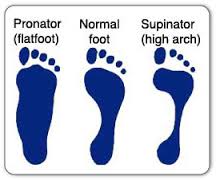Choosing a Shoe
The importance of correct footwear
When choosing a shoe, there are several factors which need to be taken into consideration to ensure the shoe is most appropriate for the individual. Because everyone’s feet move differently and are different shapes, the ideal shoe for one person may differ completely from the next. In addition many shoes are built with different characteristics which make them ideal for certain activities on specific surfaces. The perfect shoe for an individual therefore needs to be selected to suit their feet and their specific needs.
Injuries due to poor footwear
It is well documented that inappropriate footwear and poor foot posture are major contributing factors in the development of many lower limb injuries. Some of these may include:
- Plantar Fasciitis
- Shin Splints
- Achilles Tendonitis
- ITB Friction Syndrome
- Patellofemoral Pain Syndrome
- Patella Tendonitis
- Stress Fractures (such as Tibial Stress Fractures)
It is therefore vital that you choose the correct shoe to assist in injury prevention and injury rehabilitation.
Which shoe should I buy?
It is important to choose a shoe that is designed to support your foot type. There are three main categories of foot types:
- NEUTRAL – normal foot
- PRONATOR – flat foot
- SUPINATOR – high arch foot
Having your feet assessed during standing, walking and running by an experienced podiatrist is the best way to determine your foot type. There are also many shoe stores that can assess your feet to determine your foot type.
Alternatively, a simple test to determine your foot type is the wet test. After having a shower, with your feet still wet, step onto a dry surface and have a look at your wet foot print. If your foot print does not have a C-curve on the inner aspect of the foot print (figure 3) you are likely to be a PRONATOR (flat foot), if you have a very prominent C-curve on the inner aspect of the foot print (figure 4), you are likely to be a SUPINATOR (high arch) and if it’s somewhere in between (figure 2) you’re likely to have a NEUTRAL (normal foot).
NEUTRAL FOOT REQUIREMENTS
- Ideal shoe should not be designed to support the foot in any way, but should provide good cushioning, comfort and stability.
PRONATOR FOOT REQUIREMENTS
- These foot types require a motion control or stability shoe with a firm mid-sole and good arch support
- The aim with these shoes is to try and slow down pronation.
SUPINATOR FOOT REQUIREMENTS
These foot types require a comfort shoe with extra cushioning.
- The shoe should encourage pronation.
- Motion control or stability shoes are not appropriate.
Once you have determined your foot type, it is important to choose a shoe that supports your foot type and requirements. This is important since there are many shoe types designed with different properties for specific activities (e.g. walking shoes, running shoes, tennis shoes, cross trainers etc.) For example, if you want shoes for walking and you have pronating feet (flat feet) you should choose a walking shoe for pronating feet.
Fitting a shoe
When trying a shoe, always wear socks and orthotics that you would normally exercise in to ensure an accurate ‘feel’. As a general rule, the front of the shoe should not be tight, whilst your heel should feel snug in the back of the shoe preventing excessive movement. Try a variety of shoes to determine which shoe is most suitable. If you notice your foot rubbing on a specific part of the shoe, try a different model as this is likely to cause blisters with increased use. Your shoe should feel comfortable straight out of the box and should not require a period to ‘break them in’.
Shoe flexibility
When bending a shoe, the shoe should ideally flex only at the forefoot (ball of the foot – not the entire shoe). When twisting the shoe, it should have a high degree of torsional stiffness and resistance to this movement, thereby providing increased rotational support. The heel counter should be relatively rigid in order to support the foot and ankle.
How can I make my shoes last longer?
- If running, try to use relatively soft and level surfaces such as dirt, gravel or grass.
- Only use your shoes for running, not general day to day wear.
- Always undo the laces and take them off properly so you do not destroy the heel counter and other stability devices.
- Clean your shoe with a soft bristle brush, mild soap and water. Do not use a washing machine.
- Allow them to air dry. Do not use a tumble dryer or hairdryer
When should I replace my shoes?
Shoes should generally be replaced after 600 – 1000 km as they tend to lose their shock absorbing capacity after this point, therefore increasing injury likelihood. Alternatively, if your mid-sole begins to show through or demonstrates horizontal lines, it’s also time to replace them.
Choosing a Shoe Summary
- Inappropriate footwear is a major contributing factor to the development of many lower limb injuries.
- Appropriate footwear is vital to prevent many lower limb injuries and hasten their rehabilitation.
- Shoes should be selected to suit your activity and foot type.
- There are 3 main foot types: Neutral, Pronator and Supinator.
- The ‘wet test’ can help to determine your likely foot type.
- Shoes should be comfortable to wear straight out of the box.
- Shoes should only bend at the forefoot and should provide a high degree of rotational stiffness.
- The heel counter should be relatively rigid.
- Increase shoe durability by running on softer surfaces, using your shoes for their specific activity only and undoing laces to take your shoes off.
- Replace shoes after 600 – 1000km.





